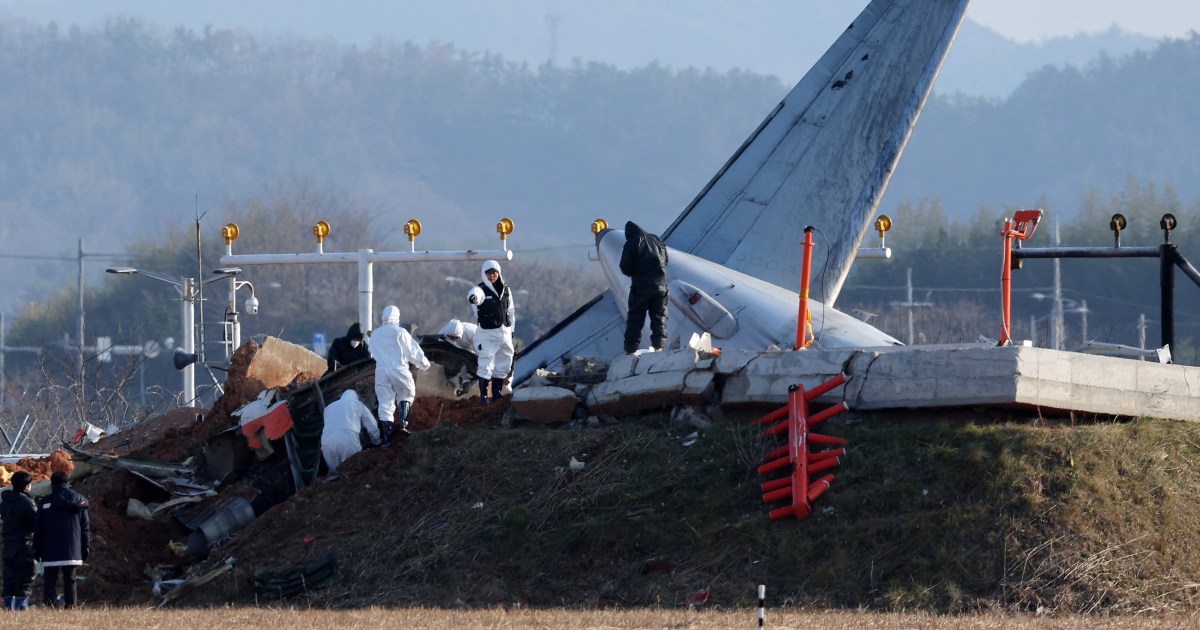Investigators turn to black boxes for answers in South Korea plane crash
SEOUL, South Korea — The black boxes from the Jeju Air plane that crashed in South Korea on Sunday are the center of focus as a joint team of U.S. and South Korean investigators work to determine the cause of the deadliest aviation disaster of 2024.
Data from the two black boxes, the flight data recorder and the cockpit voice recorder, will be instrumental in determining what happened in the minutes before the Boeing 737-800 crash-landed at Muan International Airport in the country’s southwest, killing 179 of the 181 passengers and crew members on board.
Officials said Wednesday they had finished formally identifying all 179 victims overnight and that 11 bodies had been returned to their families, allowing funerals to begin.
“Today is New Year’s Day, a day meant to be spent with family, which makes the sorrow even greater,” Choi Sang-mok, South Korea’s acting president, said in a New Year’s Day address.
“I offer my prayers for the souls of the victims and extend my deepest condolences once again to the bereaved families who have lost their loved ones.”
Choi became acting president on Friday, two days before the crash, after his predecessor, Han Duck-soo, was impeached by lawmakers just two weeks into the job. South Korea is in a state of political turmoil after a failed attempt to declare martial law last month by President Yoon Suk Yeol, who is awaiting trial after also being impeached.
Choi said “a comprehensive analysis of the aircraft, black box data and other factors will ultimately reveal the cause” of the accident, which officials have said may have involved a bird strike, an issue with the deployment of landing gear or problems with other control systems.
South Korean investigators are converting data extracted from the cockpit voice recorder into audio files, the transport ministry said Wednesday, a process that could take about two days.
While rescuers quickly recovered the two black boxes, the flight data recorder was damaged and investigators were unable to retrieve its data domestically, the ministry said. It will thus be sent to the U.S. for analysis.
The U.S. team in South Korea includes representatives from the Federal Aviation Administration and the National Transportation Safety Board as well as Boeing, the aircraft’s manufacturer, and CFM International, the engine manufacturer.
On Wednesday, bereaved families visited the accident site and held a memorial ceremony.
Jeju Air chief executive Kim E-Bae said Tuesday that the airline would cover the cost of the funerals and was preparing “emergency financial assistance as a gesture of solidarity and sympathy.”
Kim also said the airline was cutting its winter operation by up to 15% until March as it prioritizes “operational safety.”
“We will enhance pre- and post-flight inspections and weather monitoring and pay close attention to the emotional well-being of aviation personnel,” he said.
Jeju Air Flight 2216 took off from Bangkok shortly after 2 a.m. local time on Sunday (2 p.m. Saturday ET), with 181 people on board, including six crew members.
While attempting to land at Muan without landing gear, the plane burst into flames after crashing into an embankment at the end of the runway. Everyone except two cabin crew members, both of whom were in the tail end of the plane, was killed.
It is still unclear why the pilots failed to lower the landing gear.
Stella Kim reported from Seoul, South Korea, and Mithil Aggarwal reported from Hong Kong.


